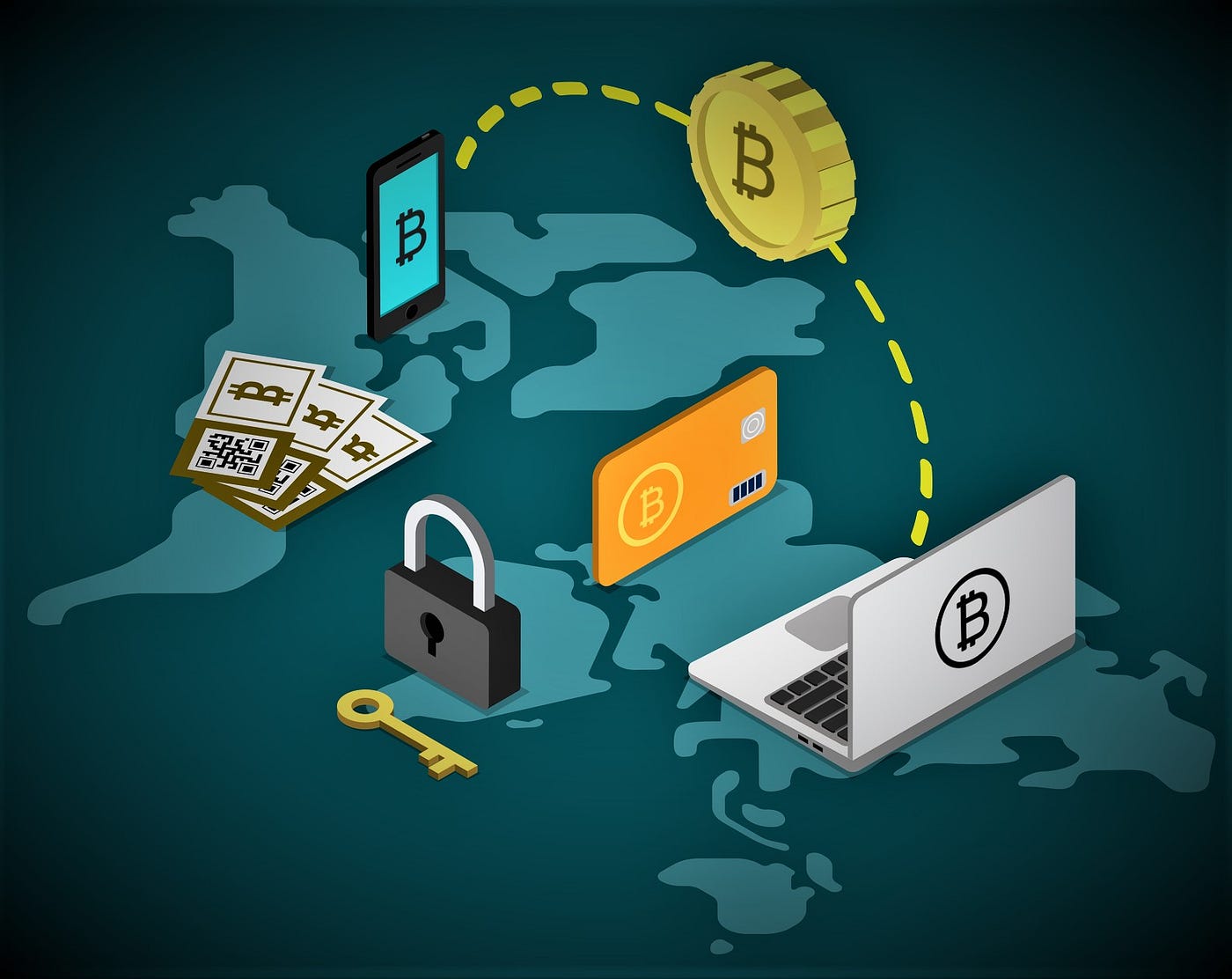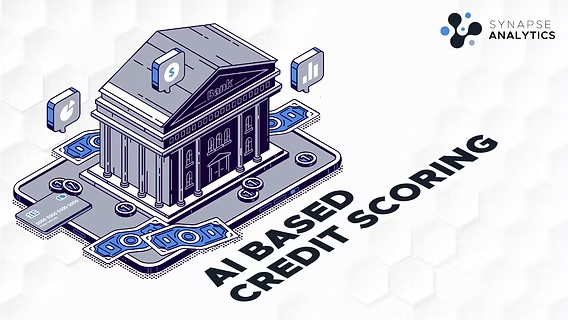Exclusive
 Flipkart Gets a Lending Licence: A Bold Leap into Embedded Finance
Flipkart Gets a Lending Licence: A Bold Leap into Embedded Finance
 The Role of Cryptocurrencies in Cross-Border Payments
The Role of Cryptocurrencies in Cross-Border Payments
 The Rise of Contactless Payments: Benefits and Security Concerns
The Rise of Contactless Payments: Benefits and Security Concerns
 What the Future Holds for Digital-Only Banks: Navigating the Next Era of Banking
What the Future Holds for Digital-Only Banks: Navigating the Next Era of Banking
.jpg) The Future of Payments: Trends Reshaping Transactions in 2025
The Future of Payments: Trends Reshaping Transactions in 2025
 The Impact of 5G on Fintech Services
The Impact of 5G on Fintech Services
 QR Codes and the Cashless Leap: Transforming India's Financial DNA
QR Codes and the Cashless Leap: Transforming India's Financial DNA
 How AI is Transforming the Credit Scoring System
How AI is Transforming the Credit Scoring System
 Biometric Payments: The Next Big Trend in Secure Transactions
Biometric Payments: The Next Big Trend in Secure Transactions
 The Evolution of Fintech Regulation: What’s Next?
The Evolution of Fintech Regulation: What’s Next?
 How Open Banking is Shaping Financial Services Globally
How Open Banking is Shaping Financial Services Globally
 Top Fintech Innovations Shaping 2025: The Future of Finance
Top Fintech Innovations Shaping 2025: The Future of Finance

Subscribers: 108
Frequently Asked Questions
FinTech (Financial Technology) refers to the innovative use of technology to provide and improve financial services. The FinTech sector encompasses a wide range of applications, including digital payments, lending, blockchain, InsurTech, wealth management (WealthTech), and more. The goal of FinTech is to make financial services more accessible, efficient, and cost-effective for individuals and businesses.
A) Digital payments (paytech)
Digital payments are one of the most widespread applications of FinTech, enabling individuals and businesses to conduct financial transactions electronically.
- Mobile Payments: Payment solutions that allow consumers to pay using their smartphones.
- Payment Gateways: Platforms that enable businesses to accept payments online.
- Digital Wallets: Solutions that store users' payment information for quick transactions.
B) InsurTech
InsurTech refers to the use of technology to disrupt and improve the insurance industry.
- Blockchain in Insurance: Streamlining claims, improving transparency, and reducing fraud.
- Policy Aggregators: Platforms that help customers compare and buy insurance policies.
C) LendingTech
LendingTech focuses on technology-driven lending solutions. This includes personal loans, business loans, and peer-to-peer lending.
- Peer-to-Peer (P2P) Lending: Platforms that allow individuals to lend and borrow money without traditional intermediaries.
- Alternative Lending: Digital platforms which provides short-term loans to individuals who might not have access to traditional credit.
D) RegTech
RegTech (Regulatory Technology) is the use of technology to address regulatory challenges within the financial industry.
- Fraud Prevention: Tools that use AI and machine learning to detect suspicious activity and mitigate financial crime.
- Compliance Automation: Solutions which help businesses automate compliance processes such as KYC (Know Your Customer) and AML (Anti-Money Laundering).
D) RegTech
RegTech (Regulatory Technology) is the use of technology to address regulatory challenges within the financial industry.
- Fraud Prevention: Tools that use AI and machine learning to detect suspicious activity and mitigate financial crime.
- Compliance Automation: Solutions which help businesses automate compliance processes such as KYC (Know Your Customer) and AML (Anti-Money Laundering).
E) Blockchain & cryptocurrencies
Blockchain is a decentralized technology that underpins cryptocurrencies and enables secure, transparent, and efficient financial transactions.
- Smart Contracts Self-executing contracts where the terms are directly written into lines of code, built on blockchain platforms.
- Cryptocurrency Exchanges: Platforms that enables individuals to buy, sell, and trade cryptocurrencies like Bitcoin and Ethereum.
F) Neobanks
Neobanks are digital-only banks that operate without physical branches, providing low-cost banking services through mobile apps.
A) Artificial Intelligence (AI)
AI is used in FinTech to improve decision-making, automation, and customer service.
- Chatbots: AI bots provide 24/7 customer support.
- Fraud Detection: AI systems detect fraud by analyzing patterns and anomalies in transaction data.
B) Machine Learning (ML)
ML algorithms allow financial services to automate decision-making and enhance predictions.
- Investment Tools: AI bots provide 24/7 customer support.
- Credit Scoring: ML models assess creditworthiness using alternative data.
C) Big Data
Big Data refers to the vast amount of information generated within financial systems, which is analyzed to provide valuable insights.
- Customer Segmentation: Platforms segment customers for targeted marketing and personalized service.
- Predictive Analytics: Analyzing past customer behavior to predict future actions and preferences.
D) Cloud Computing
Cloud computing enables financial institutions to store and process large amounts of data with scalability and security.
- Cloud-Based Financial Management: Cloud-based accounting solutions streamline business operations.
- Cloud Payments: Cloud technology is used to facilitate secure online payments.
A) Open Banking
Open Banking allows third-party providers to access bank data via APIs to develop new services.
Example: Platforms enable users’ bank accounts to connect with new financial products through secure APIs.
B) Artifical Intelligence and Automation
AI is increasingly driving automation in FinTech, streamlining processes like customer onboarding, fraud detection, and claims processing.
C) Financial Inclusion
FinTech is helping provide financial services to underbanked and unbanked populations, offering easier access to financial products via mobile phones and low-cost services.
Example: Mobile money transfer services promote financial inclusion in regions with limited access to traditional banking.
D) Embedded Finance
Embedded finance is the integration of financial services into non-financial applications or platforms.
Example: E-commerce platforms enable businesses to process payments directly through their platform.
